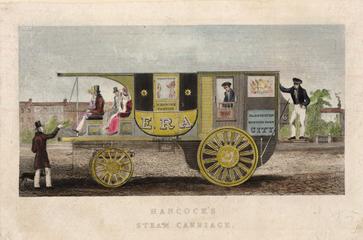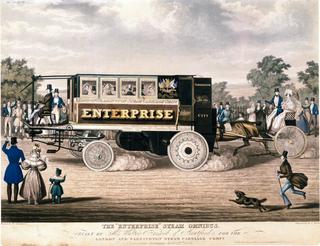
Walter Hancock was the son of James Hancock, a cabinetmaker, and Betty Hancock (nee Coleman). He was a member of the Hancock family of Marlborough, England. The Hancocks were a significant British family in the eighteenth and nineteenth centuries, known for their contributions to science, art, and industry.
Walter Hancock is best known for designing, building and running the first commercial steam carriage in London. He developed a ‘lung-powered’ steam engine using rubberised cloth balloons, and found this engine could be used to power a carriage. The first commercial steam carriage after this design was the Infant, a passenger service that ran between Stratford and the City of London, which was introduced in 1831. In 1832, he introduced the Era for the London and Brighton Steam Carriage Company, followed by the Enterprise and Autopsy in 1933, and Erin in 1934 in London. During his career, he built ten such carriages in various parts of the country. In 1838, he published ‘Narrative of Twelve Years Experiments, 1824-36, Demonstrative of the Practicality and Advantage of Employing Steam Carriages on Common Roads’, containing accounts of the development of this novel steam engine and its application to road locomotives.
He also worked in the rubber industry, obtaining a patent in 1843 for cutting rubber into sheets and a method of preparing rubber solutions.
Walter and his brother Charles Hancock established the West Ham Gutta Percha Company together in 1850. This company produced a wide variety of products made from the naturally-derived latex material gutta percha, ranging from household items such as candlesticks and bed pans to more industrial items such as valves and tubing.
